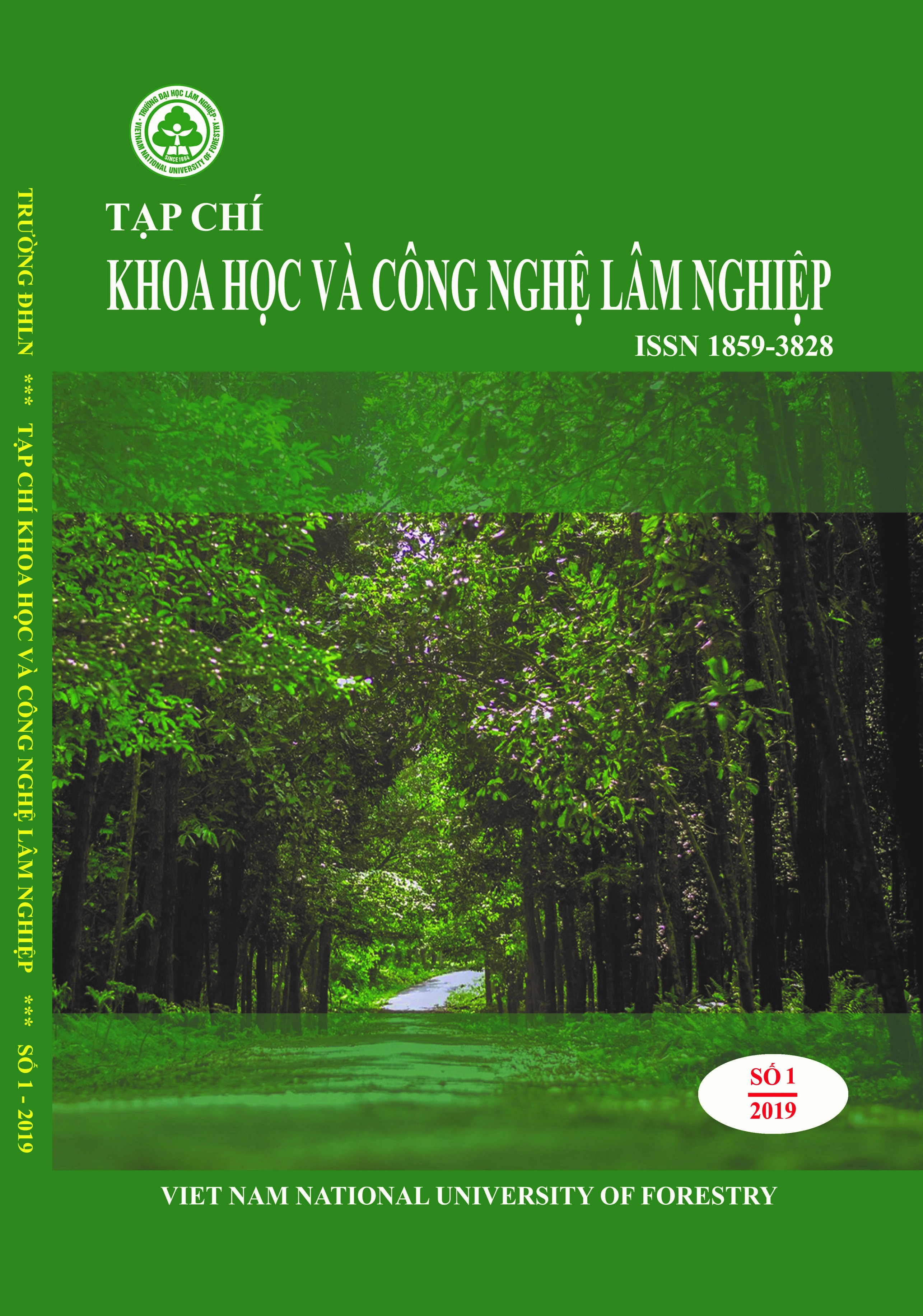SỰ BIẾN ĐỔI THÀNH PHẦN HÓA SINH CỦA TỎI XUẤT XỨ TỪ MỘT SỐ TỈNH MIỀN BẮC VIỆT NAM TRONG QUÁ TRÌNH CHẾ BIẾN TỎI ĐEN
Từ khóa:
Allium sativum L, cảm quan, lên men, tỏi đen, tỏi trắngTóm tắt
Nghiên cứu này nhằm mục đích đánh giá sự thay đổi hàm lượng các hợp chất hóa sinh của tỏi được trồng ở một số vùng khác nhau trong quá trình chế biến tỏi đen. Tỏi trắng tươi thu thập ở 4 tỉnh Sơn La, Hải Phòng, Bắc Giang và Thái Bình được xử lý và chế biến theo quy trình có kiểm soát nhiệt độ 70oC và độ ẩm 80%. Sau thời gian chế biến 30 ngày, tỏi được trồng từ các vùng nguyên liệu có sự thay đổi khác nhau. Tỏi đen được chế biến từ tỏi trồng ở Hải Phòng có hàm lượng đường tổng, hàm lượng protein, hàm lượng acid tổng cao nhất. Tỏi được trồng ở Sơn La và Hải Phòng có hàm lượng polyphenol, hàm lượng flavonoid, hoạt tính chống oxi hóa cao hơn ở nguyên liệu và tỏi đen thành phẩm khi so sánh với tỏi trồng ở các vùng khác. Tuy nhiên, chất lượng cảm quan của tỏi đen Sơn La kém nhất so với các tỉnh còn lại, chất lượng cảm quan đạt cao nhất là tỏi đen ở Hải Phòng. Do vậy, tỏi được trồng ở Hải Phòng là nguồn tỏi thích hợp nhất để chế biến tỏi đen.
Tài liệu tham khảo
Santhosha S.G., Jamuna P., Prabhavathi S.N. (2013). Bioactive components of garlic and their physiological role in health maintenance: a review. Food of Bioscience, 3, pp. 59-74.
Amagase H., Petesch B.L., Matsuura H., Kasuga S., Itakura Y. (2001). Intake of garlic and its bioactive components. Journal of Nutrien, 131, pp. 955- 962.
Fant L., Noreña C. P. Z. (2012). Enzyme inactivation kinetics and colour changes in Garlic (Allium sativum L.) blanched under different conditions. Journal of Food Engineering, 108 (3), pp. 436-443.
Yuan H., Sun L., Chen M., Wang J. (2016). The comparison of the contents of sugar, Amadori, and Heyns compounds in fresh and black garlic. Journal of Food Science, 81, pp. 1662-1668.
Choi S., Cha H.S., Lee Y.S. (2014). Physicochemical and antioxidant properties of black garlic. Molecules, 19, pp. 16811-16823.
Vokk R., Tedersoo E., Lougas T., Valgma K., Rosend J. (2014). Comparative study on anti-oxidant activity of garlic grown in different regions. Agronomy Research, 12, pp. 821-824.
Sato E., Kohno M., Hamano H., Niwano Y. (2006). Increased antioxidative potency of garlic by spontaneous short-term fermentation. Plant Foods for Human Nutrion, 61, pp.157-160.
Bradford M. M. (1976). A rapid and sensitive method for the quantitation of microgram quantities of protein utilizing the principle of protein-dye binding. Analytical Biochem, 72, pp. 248-254.
Rumbaoa R.G.O., Fernandes F.A.N., Aves R.E., Brito E.S. (2009). Phenolic content and antioxidant capacity of Philipine sweet potato varieties. Food Chemistry, 113, pp. 1133-1138.
Marinova D., Ribarova F., Atanassova M. (2005). Total phenolics and total flavonoids in Bulgarian fruits and vegetables. Journal of the University of Chemical Technology and Metallurgy, 40 (3), pp. 255-260.
Rufino, M. S. M., Alves, R. E., Brito, E. S., Morais, S. M., Sampaio, C. G., Pérez-Jimenez, J., Sauracalixto, F. D. (2007a). Metodologia Científca: Determinação da Atividade Antioxidante total em frutas pela captura do radical livre DPPH. EMBRAPA: Comunicado técnico 127 – on line. Fortaleza, Brasil.
Zhang Z., Lei M., Liu R., Gao Y., Xu M., Zhang M. (2015). Evaluation of alliin, saccharide contents and antioxidant activities of black garlic during thermal processing. Journal of Food Biochemistry, 39 (1), pp. 39-47.
Kim J.S., Lee Y.S. (2008). Effect of reaction pH on enolization and racemization reactions of glucose and fructose on heating with amino acid enantiomers and formation of melanoidins as result of the Maillard reaction. Food Chemistry, 108, pp. 582-592.
Liang T., Wei F., Lu Y., Kodani Y., Nakada M., Miyakawa T., Tanokura M. (2015). Comprehensive NMR Analysis of Compositional Changes of Black Garlic during Thermal Processing. Journal of Agriculture and Food Chemistry, 63, pp. 683−691.
Zhang Z., Lei M., Liu R., Gao Y., Xu M., Zhang M. (2015). Evaluation of alliin, saccharide contents and antioxidant activities of black garlic during thermal processing. Journal of Food Biochemistry, 39 (1), pp. 39-47.
Kim H.K., Jo K.S., Kwon D.Y., and Park M.H. (1992). Effects of drying temperature and sulfiting on the qualities of dried garlic slices. Journal of Korean Agricultural Chemical Society, 35(1), pp. 6-9.
Choi S., Cha H.S. and Lee Y. S. (2014). Physicochemical and Antioxidant Properties of Black Garlic, Molecules, 19, pp.16811-16823
Choi D.J., Lee S.J., Kang M.J., Cho H.S., Sung N.J. and Shin J.H. (2008). Physicochemical characteristics of black garlic (Allium sativum L.). Journal of Korean Society of Food Science and Nutrition, 37, pp. 465-471.
Tsai T.H., Tsai P.J., Ho S.C. (2005). Antioxidant and anti-inflammatory activities of several commonly used spices. Journal of Food Science, 70, pp. 93–97.









